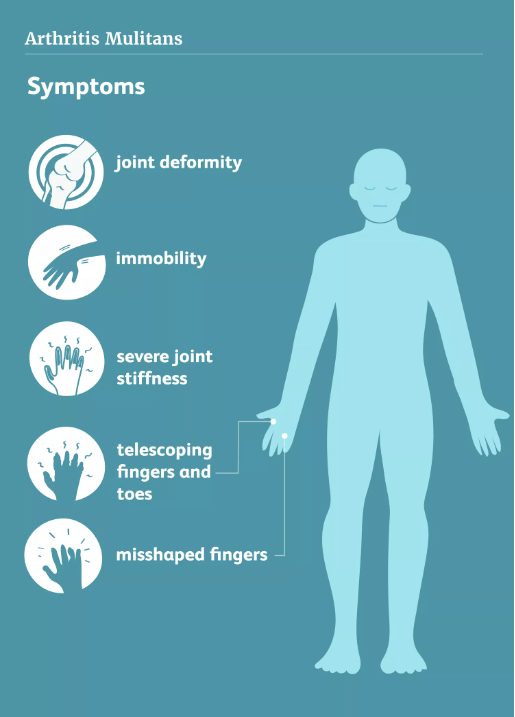By Carol Eustice
Medically reviewed by Anita C. Chandrasekaran, MD
Viral arthritis is an acute form of arthritis caused by a viral infection. According to a 2016 review in the journal Clinical Medicine, about 1% of acute arthritis cases are associated with a viral infection.1 Unlike osteoarthritis, in which symptoms are persistent, viral arthritis tends to come and go within a short span of time with no lasting after-effects.
Many viruses have been linked to viral arthritis. Treatments are generally directed at alleviating joint pain and inflammation. The resolution of the underlying infection will usually resolve the arthritis symptoms.
Sebastian Kaulitzki/Science Photo Library/Getty Images
Symptoms
Symptoms of viral arthritis tend to develop suddenly, be of short duration, and not recur. Many cases of viral arthritis resolve within six weeks.2 The classic triad of symptoms are similar to those of rheumatoid arthritis:
Joint pain and stiffness, particularly in the morning
Loss of range of motion of a joint
Symmetrical joint involvement1
The joint symptoms often are preceded by or coincide with the signs and symptoms of a viral infection (such as fever, muscle ache, and fatigue). In some cases, there may be a rash similar to that seen in rheumatic diseases.
Viral arthritis also tends to manifest with polyarthritis (arthritis in more than five joints). People with pre-existing osteoarthritis or rheumatoid arthritis may experience a worsening of joint symptoms due to the rapid onset of viral inflammation.1
Viral arthritis does generally not cause joint destruction, although some viral causes (like the chikungunya virus) may cause joint pain for months and even years after the infection has cleared.3
Causes
Viruses can sometimes invade a joint during an infection. When this occurs in the synovium or surrounding tissues, the viral particles are recognized as antigens (substances that trigger an immune response) by the immune system.
In such an event, the immune system will not only attacks the viruses freely circulating in the bloodstream but also deposits substances called immune complexes into the joint space. Immune complexes help defensive antibodies bind to antigens but also trigger acute inflammation, causing joint pain and swelling. Viral arthritis is the result.1
The viruses most commonly linked to viral arthritis include:
Hepatitis C virus (HCV): Affecting 2% to 20% of infected adults
Hepatitis B virus (HBV): Affecting 10% to 25% of infected adults
Rubella virus: Affecting 30% of females and 6% of males
Parvoviruses: Affecting up to 60% of infected adults
Epstein-Barr Virus (EBV): Affecting up to 80% of infected adults
Alphaviruses: Affecting between 85% and 100% of those infected with certain forms of the virus, such as the chikungunya virus2
Other viruses less commonly associated with viral arthritis include the hepatitis E virus (HEV), human T-lymphotropic virus type-1 (HTLV-1), enteroviruses, and the dengue virus.4
Due to the widespread vaccination of mumps and other viral diseases, viral arthritis is less common in the United States than it once was.1
Diagnosis
Diagnosis of viral arthritis can be tricky because there is no single presentation of the disease that is considered "typical." The classic signs of viral arthritis—fever, rash, and joint pain—can occur with other illnesses, many of which are not viral.
Moreover, different viruses affect different organs and can manifest with a wide variety of symptoms. Viral arthritis caused by HBV, for example, can manifest with jaundice (yellowing of the eyes and skin), while viral arthritis caused by the rubella virus may present with a widespread rash.
Viral arthritis should be suspected if multiple joints on both sides of the body are affected, and the joint symptoms are accompanied by (or preceded by) symptoms of systemic infection.
Blood Tests
Viral arthritis is diagnosed with blood tests that confirm the underlying infection. These may include:
Antibody tests that detect disease-specific antibodies
Polymerase chain reaction (PCR) tests that detect disease-specific viral DNA
Immunoglobulin tests that measure the rise and fall of specific antibodies—known immunoglobulin M (IgM) and immunoglobulin G (IgG)—to help track the stage and duration of an infection
Depending on the suspected cause, these and other tests may be performed. Immunoglobulin tests are especially useful in directing the appropriate treatment based on whether the infection is acute (as indicated by an elevated IgM) or persistent (as indicated by a stable elevation of IgG).
Additional blood tests may also be ordered to rule out other possible causes for the joint symptoms. Erythrocyte sedimentation rate (ESR) and C-reactive protein (CRP) levels will be normal in OA but elevated in viral arthritis as well as inflammatory/immune arthritis, such as RA.2
Treatment
The treatment of viral arthritis focuses on symptom relief and the restoration of joint function. In some cases, treatments will be started presumptively since they are commonly used to treat many inflammatory joint conditions. Other prescription treatments may be delayed until more definitive results are obtained.
Treatment options for viral arthritis may include:
Analgesics like Tylenol (acetaminophen)
Nonsteroidal anti-inflammatory drugs (NSAIDs) like over-the-counter Advil (ibuprofen) or prescription Zorvolex (diclofenac)
Ice application to reduce acute swelling
Heat application to alleviate joint stiffness
Corticosteroids are generally avoided since they can mask or worsen the underlying viral disease. Moreover, most cases of viral arthritis are self-limiting and resolve on their own in tandem with the underlying infection.
Physical therapy may help improve joint function in rare cases, like chikungunya infection, where joint symptoms are persistent.3
Sources
Marks M, Marks JL. Viral arthritis. Clin Med (Lond). 2016;16(2):129-34. doi:10.7861/clinmedicine.16-2-129
Tiwari V, Bergman MJ. Viral arthritis. In: StatPearls.
Goupil BA, Mores CN. A review of chikungunya virus-induced arthralgia: Clinical manifestations, therapeutics, and pathogenesis. Open Rheumatol J. 2016;10:129-40. doi:10.2174/1874312901610010129
Burrell CJ, Howard CR, Murphy FA. Viral syndromes. Fenner White Med Virol. 2017;2017: 537-56. doi:10.1016/B978-0-12-375156-0.00039-4
By Carol Eustice
Carol Eustice is a writer covering arthritis and chronic illness, who herself has been diagnosed with both rheumatoid arthritis and osteoarthritis.






Post comments